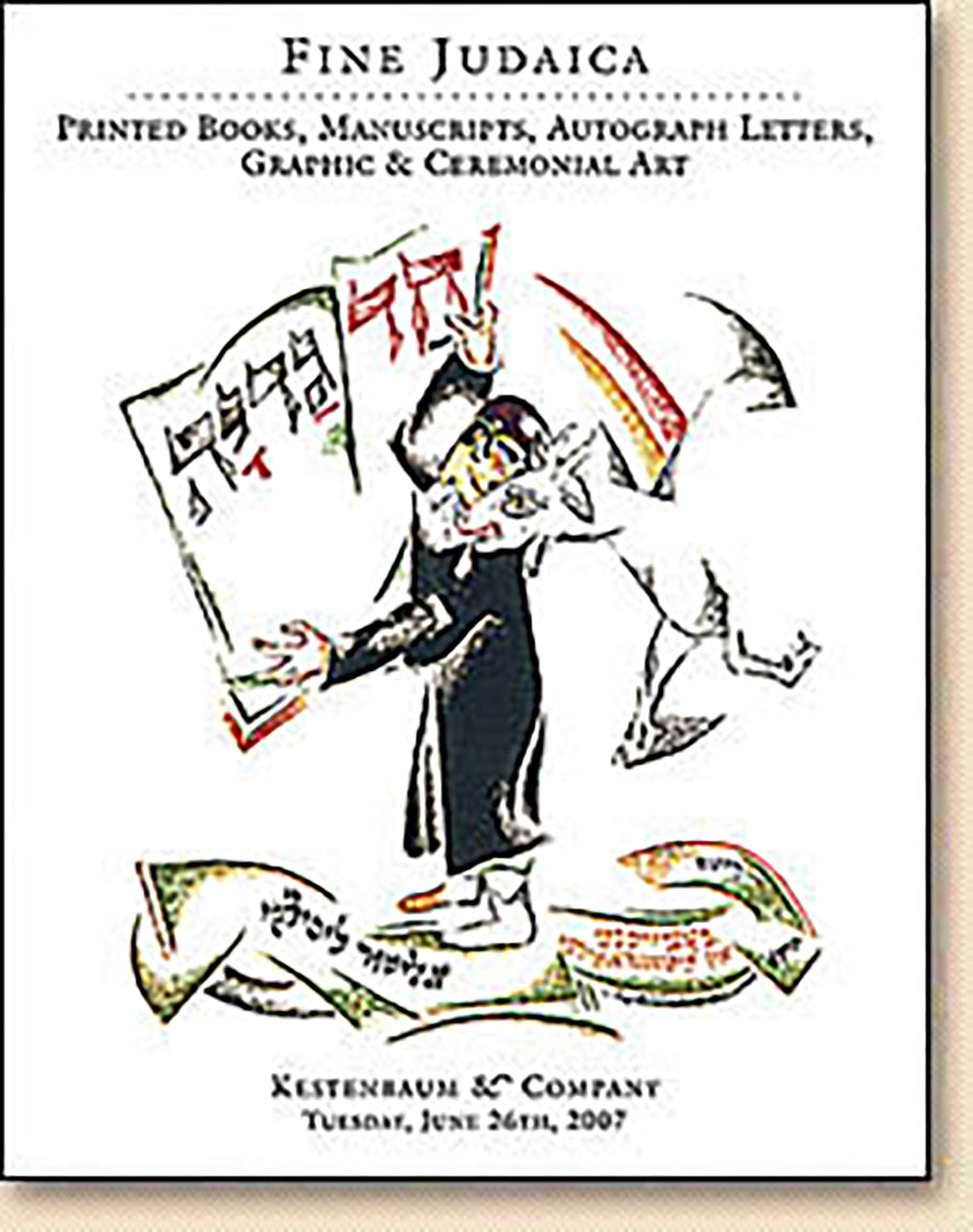The Gurs Hagadah

AUCTION 37 |
Tuesday, June 26th,
2007 at 1:00
Fine Judaica: Printed Books, Manuscripts, Autograph Letters, Graphic & Ceremonial Art
Lot 85
(HAGADAH)
The Gurs Hagadah
Gurs (France): (1941)
Est: $6,000 - $8,000
PRICE REALIZED $16,000
THE HISTORIC GURS HAGADAH
The colophon of this crudely mimeographed Hagadah breathes not a word of the indescribable conditions under which it was produced. Gurs, in the south-east tip of France, was a concentration camp set up by the Vichy Government for the internment of foreign-born Jews - especially recent Jewish refugees from Germany and Austria. With pitifully few exceptions, the majority of the inmates of Gurs were transferred to the infamous transit camp at Drancy, north of Paris, and from there, to the death-camp of Auschwitz.
Suffering under severe conditions and quite cut off from the outside world, Rabbi Leo (Yehudah) Ansbacher, along with other enterprising inmates of the camps (primarily Ludwig Zuckerman), succeeded in clandestinely producing - from memory- this Passover Hagadah. (Gutterman chalks up the missing passages in the Gurs Hagadah to an understandable faulty recollection by Ansbacher and Zuckerman).
Ansbacher, a native of Frankfurt, fled Nazi Germany to Belgium in 1933. In May 1940, he was deported from Belgium to France, summarily arrested and sent to Gurs. As rabbi, he sought to infuse the camp with a semblance of religious life. Ansbacher eventually succeeded in escaping Gurs and crossed the Pyrenees to Spain, after the war finding his way to Palestine. There, he served as the rabbi of a Tel Aviv congregation for many years until his death in 1998. Like Ansbacher, Zuckerman was a native of Germany, who also emigrated to Belgium, only to be deported to France in 1940. In May 1942, Zuckerman, too would escape from Gurs, hidden in a coffin, assisted by a French acquaintance, a non-Jewish gravedigger. Eventually, he joined the French Resistance. (See Gutterman, pp. 35, 44, 48-52, 71, 86).
Yaari mistakenly believed the copy of the Gurs Hagadah presented to the JNUL by I.J.
Halevi-Meirowitsch of Paris to be the only extant copy. Yerushalmi notes that a second copy is in the possession of the JTSA.
The present copy is the “Archive Copy in England,” described in B. Gutterman (Ed.), The Gurs Haggadah: Passover in Perdition (2003), p.53. See also EJ, Vol. VII, cols. 34-35
